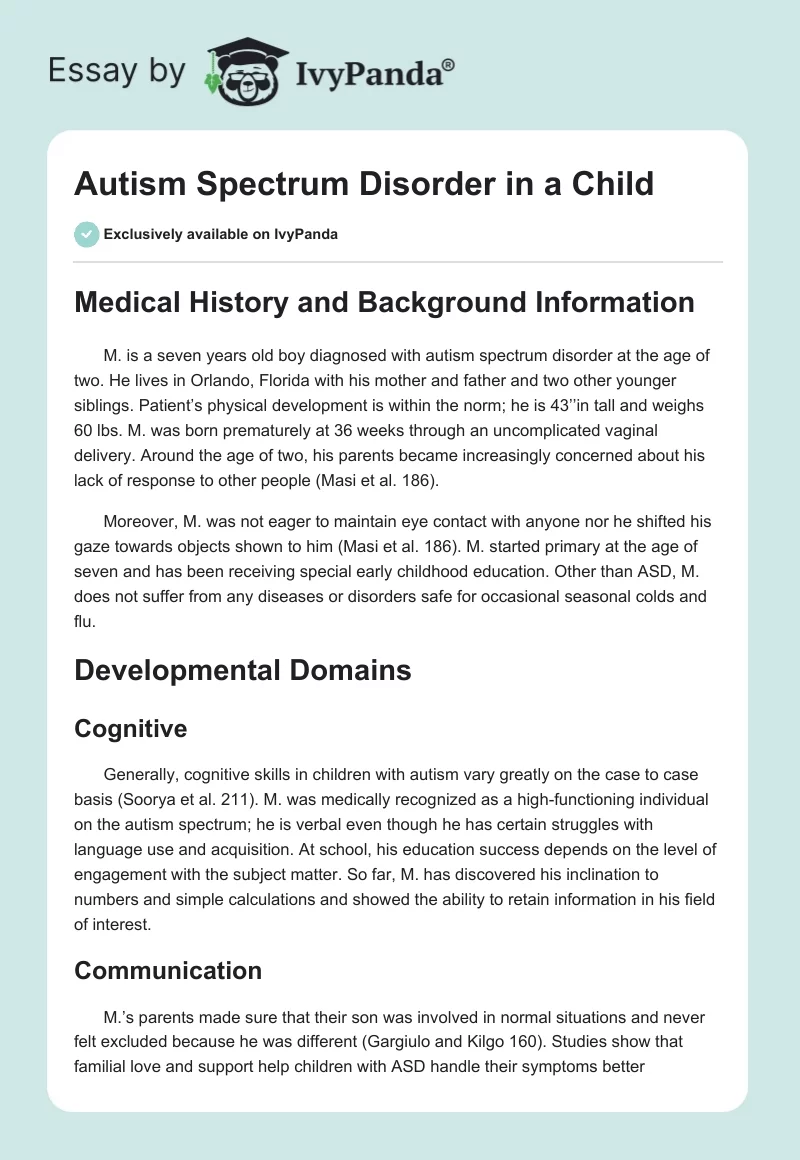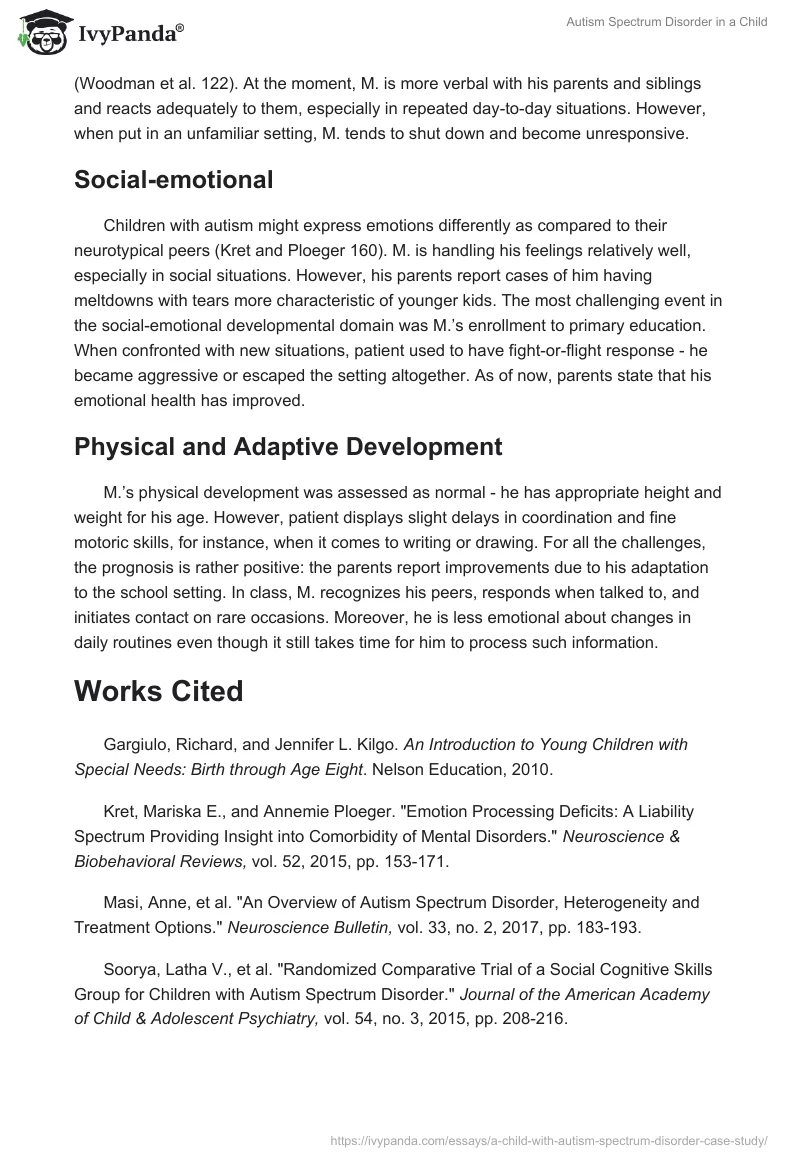Medical History and Background Information
M. is a seven years old boy diagnosed with autism spectrum disorder at the age of two. He lives in Orlando, Florida with his mother and father and two other younger siblings. Patient’s physical development is within the norm; he is 43’’in tall and weighs 60 lbs. M. was born prematurely at 36 weeks through an uncomplicated vaginal delivery. Around the age of two, his parents became increasingly concerned about his lack of response to other people (Masi et al. 186).
Moreover, M. was not eager to maintain eye contact with anyone nor he shifted his gaze towards objects shown to him (Masi et al. 186). M. started primary at the age of seven and has been receiving special early childhood education. Other than ASD, M. does not suffer from any diseases or disorders safe for occasional seasonal colds and flu.
Developmental Domains
Cognitive
Generally, cognitive skills in children with autism vary greatly on the case to case basis (Soorya et al. 211). M. was medically recognized as a high-functioning individual on the autism spectrum; he is verbal even though he has certain struggles with language use and acquisition. At school, his education success depends on the level of engagement with the subject matter. So far, M. has discovered his inclination to numbers and simple calculations and showed the ability to retain information in his field of interest.
Communication
M.’s parents made sure that their son was involved in normal situations and never felt excluded because he was different (Gargiulo and Kilgo 160). Studies show that familial love and support help children with ASD handle their symptoms better (Woodman et al. 122). At the moment, M. is more verbal with his parents and siblings and reacts adequately to them, especially in repeated day-to-day situations. However, when put in an unfamiliar setting, M. tends to shut down and become unresponsive.
Social-emotional
Children with autism might express emotions differently as compared to their neurotypical peers (Kret and Ploeger 160). M. is handling his feelings relatively well, especially in social situations. However, his parents report cases of him having meltdowns with tears more characteristic of younger kids. The most challenging event in the social-emotional developmental domain was M.’s enrollment to primary education. When confronted with new situations, patient used to have fight-or-flight response – he became aggressive or escaped the setting altogether. As of now, parents state that his emotional health has improved.
Physical and Adaptive Development
M.’s physical development was assessed as normal – he has appropriate height and weight for his age. However, patient displays slight delays in coordination and fine motoric skills, for instance, when it comes to writing or drawing. For all the challenges, the prognosis is rather positive: the parents report improvements due to his adaptation to the school setting. In class, M. recognizes his peers, responds when talked to, and initiates contact on rare occasions. Moreover, he is less emotional about changes in daily routines even though it still takes time for him to process such information.
Works Cited
Gargiulo, Richard, and Jennifer L. Kilgo. An Introduction to Young Children with Special Needs: Birth through Age Eight. Nelson Education, 2010.
Kret, Mariska E., and Annemie Ploeger. “Emotion Processing Deficits: A Liability Spectrum Providing Insight into Comorbidity of Mental Disorders.” Neuroscience & Biobehavioral Reviews, vol. 52, 2015, pp. 153-171.
Masi, Anne, et al. “An Overview of Autism Spectrum Disorder, Heterogeneity and Treatment Options.” Neuroscience Bulletin, vol. 33, no. 2, 2017, pp. 183-193.
Soorya, Latha V., et al. “Randomized Comparative Trial of a Social Cognitive Skills Group for Children with Autism Spectrum Disorder.” Journal of the American Academy of Child & Adolescent Psychiatry, vol. 54, no. 3, 2015, pp. 208-216.
Woodman, Ashley C., et al. “Change in Autism Symptoms and Maladaptive Behaviors in Adolescence and Adulthood: The Role of Positive Family Processes.” Journal of Autism and Developmental Disorders, vol. 45, no. 1, 2015, pp. 111-126.


